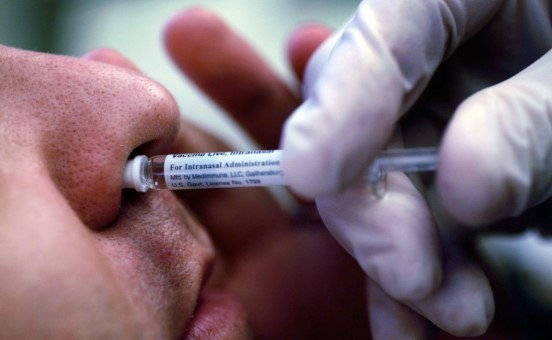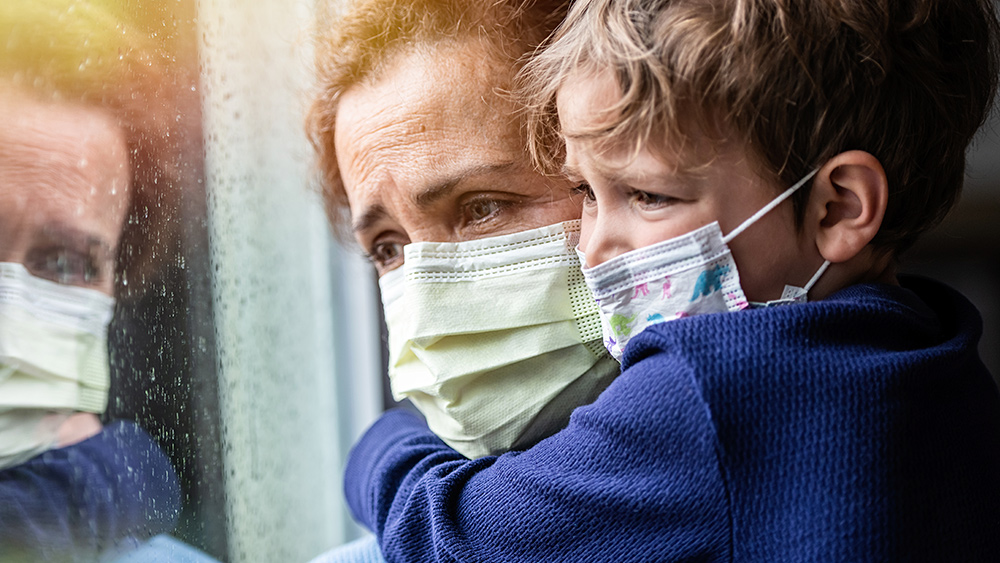A silent killer creeps along America's coasts
By avagrace // 2025-08-12
Tweet
Share
Copy

- A flesh-eating bacteria once limited to the Gulf of Mexico is now expanding northward due to rising ocean temperatures, with increasing cases in Florida, Louisiana and North Carolina.
- The bacteria causes necrotizing fasciitis, destroying skin, muscle and blood vessels within hours. Without immediate medical intervention, amputation or death is likely.
- Warmer waters (68 F-95 F) and stronger storms allow Vibrio to thrive in new regions, with coastal water samples now consistently testing positive.
- People with weakened immune systems, liver disease, diabetes, open wounds or those consuming raw seafood (especially oysters) face the greatest danger, with mortality rates up to 70 percent if sepsis develops.
- Avoid swimming with open wounds, cook seafood thoroughly and seek immediate medical care for symptoms like fever or blistering after water exposure. Rising ocean temperatures suggest further spread, demanding policy action.
The gruesome reality of necrotizing fasciitis
V. vulnificus is not a typical infection. When it enters the body — through a small cut or by consuming contaminated seafood — it attacks with alarming ferocity. The bacteria release toxins that rapidly destroy skin, muscle and blood vessels, leading to a condition known as necrotizing fasciitis. Victims may first notice blisters, but within hours, the flesh begins to blacken and rot. Without immediate medical intervention, amputation or extensive surgery becomes the only option for survival — and even then, the odds are grim. (Related: CDC warns of rare FLESH-EATING bacteria that has killed 5 in Florida, 2 in Connecticut and 1 in New York.) This year, Florida has recorded 16 cases and five deaths, Louisiana has reported 17 infections and four fatalities, and North Carolina has documented 59 cases with one death. These numbers far exceed historical norms, signaling a dangerous shift in the bacteria's reach.Water temperature changes fuel spread
Scientists have long predicted that warming waters would expand the habitats of deadly pathogens, and V. vulnificus is a chilling confirmation of those warnings. The bacteria flourish in waters between 68 F and 95 F — temperatures now increasingly common along the Eastern Seaboard. Rachel Noble, a microbiologist at the University of North Carolina at Chapel Hill, notes that every water sample taken along the state's coast now contains Vibrio, a phenomenon unheard of just two decades ago. Meanwhile, intensifying hurricanes and flooding push the bacteria into freshwater systems, exposing more people to potential infection.A victim's harrowing experience
In 2019, Adam Perez, a 42-year-old Texas resident, waded into the waters of Corpus Christi's Waters Edge Park. What seemed like a harmless outing turned into a nightmare. Within hours, his leg swelled grotesquely, his skin darkened and doctors scrambled to save his life through multiple surgeries and skin grafts. His story is a stark reminder of how swiftly Vibrio can strike — and how devastating the consequences can be. While anyone can contract V. vulnificus, certain groups face far greater risks. Individuals with weakened immune systems — such as those with diabetes, liver disease or HIV — are especially susceptible. Older adults, particularly those over 65, are also at higher risk, as are people with open wounds, including minor cuts or fresh tattoos. Those who consume raw or undercooked seafood, especially oysters, are in danger as well. Once infected, victims face a mortality rate of 20 percent, which skyrockets to 70 percent if sepsis or necrotizing fasciitis develops.How to stay safe
Health officials urge extreme caution for those near coastal waters. Avoid swimming with open wounds, and if exposure is unavoidable, cover cuts with waterproof bandages. Cook seafood thoroughly — oysters in particular — to kill any lurking bacteria. Most critically, seek immediate medical attention if symptoms like fever, swelling, or blistering appear after water exposure. Delaying treatment can be fatal. As ocean temperatures continue to rise, Vibrio's northward expansion shows no signs of slowing. States unprepared for this growing threat may soon face outbreaks beyond their capacity to control. For now, awareness and swift action are the best defenses—because in the fight against flesh-eating bacteria, hesitation can mean death. The pressing question remains: Will policymakers take this escalating danger seriously, or will more lives be lost to the warming waters? Watch this video about a flesh-eating bacteria. This video is from the BombMomOf6 channel on Brighteon.com.More related stories:
Hospitals serving up flesh-eating bacteria? Hurricane Ian aftermath: Floridians grappling with spread of flesh-eating bacteria. Warning signs that your wound might be infected with flesh-eating bacteria. Flesh-eating bacteria deadlier than sharks wreaking havoc in Florida after Hurricane Ian. Woman dies of flesh-eating bacteria after wading through flood waters in storm-ravaged Houston. Sources include: Dailymail.co.uk NBCNews.com USAToday.com Brighteon.comTweet
Share
Copy
Tagged Under:
environment United States North Carolina Florida outbreak ecology dangerous infections Gulf of Mexico clean water pathogens necrotizing fasciitis flesh eating bacteria ocean health badhealth Louisiana contaminated seafood Vibrio vulnificus
You Might Also Like
Food safety alert: FDA issues warning about shrimp contaminated with RADIOACTIVE isotope
By Ramon Tomey // Share
AI overlords vs. humans: Escalating war over power grid sabotage
By Finn Heartley // Share
Recent News
California fog traps pollution, sparking health concerns
By willowt // Share
Syrian migrant threatens nightclub in Germany with AK-47 after being turned away
By ramontomeydw // Share
Climate science under scrutiny: Study challenges validity of global temperature metrics
By bellecarter // Share
The censorship of mask science: How evidence against mask efficacy is being purged
By patricklewis // Share
Study: Sugary drinks cause more Type 2 diabetes than sugary foods
By avagrace // Share











